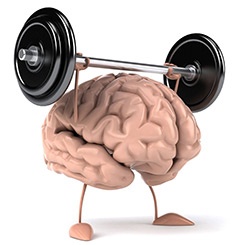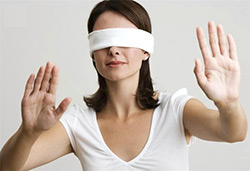A Look At The Importance of The Brain and Proprioception In Regards to Training Performance.
Intrinsic improvements to exercise performance involve a combination of neural, chemical and muscular alterations that occur when the body is stressed past its normal limits. This article will discuss the effects of exercise on the brain and Central Nervous System (CNS). These effects are the means by which we as humans learn and improve movement related skills and techniques. Poor technique in any exercise situation is a precursor for injury, and any attempt to minimise this is worth investigating.
Neuroplasticity
Brain plasticity, or ‘neuroplasticity’, is the incredible ability of an injured or uninjured brain to reorganise, change and adapt to stress[1]. According to the Webster’s New World Medical Dictionary, neuroplasticity allows the neurons (nerve cells) in the brain to compensate for injury and disease and to adjust their activities in response to new situations or to changes in their environment. Brain reorganization takes place by mechanisms such as “axonal sprouting” in which axons of the CNS develop nerve endings which connect with other damaged or undamaged nerve cells, forming new neural pathways to accomplish a needed function[2]. Like muscle growth, the process occurs in the hours and days after a workout and requires repetition to perfect the neural connection. Plasticity and learning is more prolific, however, during childhood and adolescence although studies have shown regular exercise to be a very important link to cognitive health and improved plasticity in the elderly as well as enhanced neuronal resistance to muscular injury[3].


Improving Neural Efficiency
Biologically the brain and nervous system form brain maps through the ‘wiring together’ of nerves, referred to as Long Term Potentiation (LTP)[4]. This allows the brain and nervous system to learn and form movement ‘memories’ or ‘maps’. Long term memory requires a permanent representation, developed in the behavioural-specific region of the brain[5]. Continued practice (behavioural change) stimulates increasing LTP and improves the efficiency of the nerve circuitry making up these ‘movement maps’, thus requiring less mental effort and concentration from the individual[4]. This will promote enhanced proprioception and neural activation time, laying the groundwork for further increases in skill performance. By maximising the effectiveness of the central nervous system and its control over movement, we can then begin to enhance performance via strength and conditioning methods.

Proprioception: The sixth sense
Proprioception is your body’s sense of its position in space. This sense stems from receptors located in the muscle spindles, which convey information to the brain regarding the degree of stretch in muscles and tendons, as well as load and slippage at joints. This allows your brain to follow the movements of your body without the help of visual processing. Training your proprioceptive sense can involve the removal of these visual processing capabilities, forcing the brain to work harder to recognise proprioceptive input. This improves the brain maps involved in performing specific tasks, skills and techniques and has also been proven to reduce the risk of injury. Proprioceptive training during injury rehabilitation is imperative so the neural mechanisms of the injured site are fully recovered to minimise the risk of re-injury.

Imaging your way to better performance
A recent theory suggested that we can actually develop and strengthen brain maps for motor skills quite literally by thinking about the movement or task. Through complete concentration, simply imagining a movement activates all but one part of the brain regions necessary to physically carry out the activity[1]. Like an idling car engine, all parts necessary to move the car are activated and running, but the gears are never engaged. Regular practice of ‘motor imagery’ stimulates the brain to reorganise and develop, reinforcing the brain maps for this movement. For this technique to be effective you must imagine yourself completing the movement, and a high level of concentration should be maintained throughout. There is, however, considerable research still to be completed regarding this topic.
In conclusion, it is important to realise that in order to improve skills and techniques, one must maximise the efficiency of the CNS and its control over movement. The brain reacts to every kind of stimulus and positively responds to any mode of exercise. Physical and mechanical benefits stem from the increased effectiveness of neural mapping and communication within the bodies CNS.
References
1. Author (2008). Brain Mapping. Peak Performance Magazine #274, 5-7.
2. Neuroplasticity. Webster’s New World Medical Dictionary Third edition. Wiley Publishing: Sydney.
3. Cotman C.W ., & Berchtold N.C. (2002). Exercise: a behavioural intervention to enhance brain health and plasticity. Trends in neurosciences, 25(6), 295-301.
4. Lundy-Eckman L. (2007). Neuroscience: Fundamentals for Rehabilitation 3rd ed. Saunders Elsevier: Missouri.
5. Beatty J. (2001). The Human Brain: Essentials of Behavioural Neuroscience. Sage Publishing: California
If you found this article useful, you may also enjoy reading How To Be a Great Personal Trainer: The 10,000 Rule, or The 10 Commandments of a Personal Trainer.
Learn about resistance training exercises in Fit Education’s Cert 3 in Fitness, Cert 4 in Fitness,and Diploma of Fitness.
